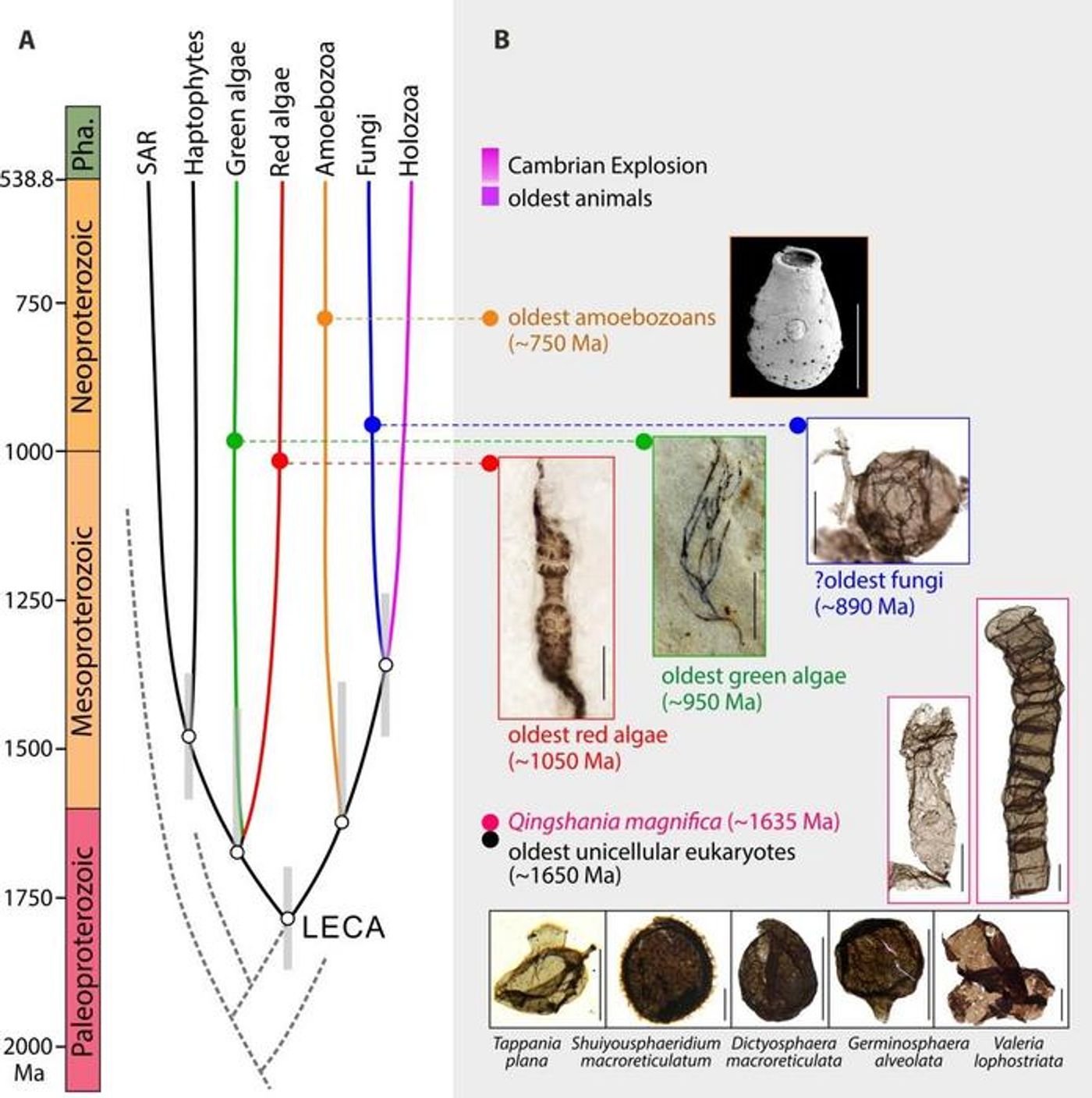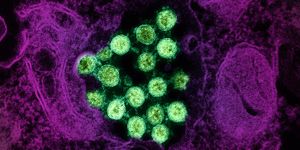North China Fossils Show Eukaryotes are far Older Than Thought
What is the last common ancestor of all plants and animals? Where did complex life come from and when? Scientists have been trying to answer these questions for many years. A new finding has changed what we thought about the emergence of complex cells known as eukaryotes. A recent discovery at the Chuanlinggou Formation in Northern China has revealed multicellular fossils that are estimated to be 1.63 billion years old, which is about 70 million years older than other fossil records have found. These findings have been reported in Science Advances.
Eukaryotes include fungi, plants, and animals, and these cells contain DNA in a membrane-bound nucleus, unlike bacteria and archaea. Complex life consisting of multiple cells as we know them could not have arisen on Earth without simple cells making the transition to eukaryotic cells. Red and green algae and some fungi are examples of very simple forms of multicellular life, and they appeared about 1.05 billion years ago. There are some other fossil records that could be evidence of older multicellular life, but these findings are unclear and under debate.
"The newly discovered multicellular fossils...are unbranched, uniseriate filaments composed of two to more than 20 large cylindrical or barrel-shaped cells with diameters of 20 to 194 μm and incomplete lengths up to 860 μm. These filaments show a certain degree of complexity based on their morphological variation," said study co-author Miao Lanyun.
These fossils are named Qingshania magnifica, and some of their cells have a round intracellular structure. Their structure is somewhat similar to eukaryotic algae, which use spores for reproduction.
There are bacterial, archaeal, and eukaryotic uniseriate filaments in the modern world. Filamentous prokaryotes tend to be quite small, although some such as cyanobacteria can get much larger. In larger forms, however, Filamentous prokaryotes are very simple and do not use spores for reproduction. As eukaryotes, Qingshania have very diverse morphological features, sizes, and filament diameters.
Qingshania was probably a type of photosynthetic algae and a relative of organisms like red or green algae and land plants, suggested Miao.
Eukaryotic algae (Archaeplastids) emerged after the last eukaryotic common ancestor (LECA), so if Qingshania are indeed algae, their discovery will add evidence to the idea that LECA existed during the late Paleoproterozoic era. Molecular clock studies have also suggested that LECA lived during the late Paleoproterozoic era (and not the late Mesoproterozoic era, which was about 1 billion years ago).
Sources: Chinese Academy of Sciences, Science Advances










